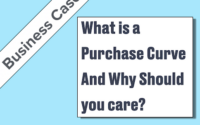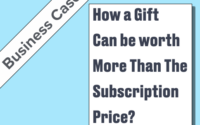Price increase: the headlong rush – Part 1
In detail 📈:
You are subscribed to a service and you receive an email informing you of new applicable rates. This email, indicating a price increase, comes regularly.
Let’s explore why prices increase: the objectives and reasons behind this choice.🤔💡
Then, we will take the opportunity to shed light on other related questions:💡
- Why are price increases just a headlong rush?🚀
- What can merchants do to avoid price increases? 🤷♂️🛑
1. The reason for increasing the price of subscriptions 💰⬆️
Exceptionally, an increase can result from an opportunity:
- My competitors are much more expensive than me: I can increase my prices while remaining the cheapest
Or from a strategy:
- I am in the Premium segment, I must be more expensive than my competitors
This article will not cover these two special cases.
Generally, price increases are motivated by the desire or need to increase bookings. The goal is to meet financial objectives: bookings, revenue, margins, and earnings per share. 📊📈💵
Regardless of the financial goal, increasing bookings is essential.
2. The levers available to increase booking 🎚️
In a subscription business, Booking is defined as follows:
Booking Total = Booking Acquisition + Booking Retention
Booking Acquisition = Number of new subscriptions x ASP (Average Selling Price)
Booking Retention = Number of existing subscriptions x Retention Rate (RR%) x ASP
To increase booking, you must use at least one of these levers:
- Number of subscribers 👥
- Retention Rate 📊
- ASP 💵
Let’s look at each of the levers in detail. 🔍
a. The number of existing subscribers 🧮
Past sales can’t be changed now. This lever isn’t immediately available; first, you must acquire new subscribers.
b. The number of new subscribers 🆕
More acquisitions boost bookings and retention opportunities next year. In the growth phase, this is the best option. When the business is mature, the size of the Acquisition business is much smaller than that of the Retention business; in the short term, the proportion of new subscribers among the total subscribers will remain low. However, it is an interesting lever in the long term.
c. The Retention Rate (RR%) 📈
By managing to retain more while maintaining constant acquisition, we increase the total number of subscribers. This option requires a significant increase in the RR%. If we are looking for a short-term effect, this assumes that the current performance is poor. In addition, an increase in the RR% cannot be decreed; at best, we can create a situation favorable to its increase. In the end, it is the customer who decides whether or not to renew.
d. ASP 💵
The merchant decides on the prices, he can increase them at any time. The price does not depend on the customer but the ASP is a function of price and RR%, it partially depends on the customer.
There are some constraints since regulators are demanding on the communication of renewal prices, especially in the event of an increase. The merchant must inform the customer that the new price is higher than the one paid during the previous renewal. (See the article on Communicating on renewal)
When you want to be sure to increase the booking on a given date, the best option is to change the price. This is the lever that depends the least on the customer’s behavior. You just have to respect the rules set by the regulators.
3. The impact on the retention rate 📉
As the merchant has a duty to communicate, increases do not go unnoticed. After the announcement, we generally see an increase in subscription cancellations leading to a drop in the retention rate. It will be more or less significant depending on the price increment.
The price difference creates the impact. Moreover, we generally observe a return of the RR% to its previous level at the next renewal since the price is unchanged.
The evolution of the RR% rate could look like this:

Table #1 : example of RR% evolution according to price
The drop in the retention rate is explained by the fact that price-sensitive customers leave. 💸
In the event that the drop in the RR% is very significant, we may be tempted to return to the previous price. This generally has no effect because price-sensitive customers have left and will not come back. This leaves non-price-sensitive customers who will not be more loyal if the price decreases.
In the second part of this article, we will see the other effects induced by a price increase and why price increases are just a headlong rush. 🚀



